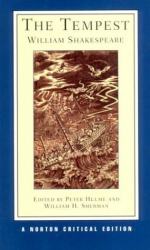|
This section contains 1,834 words (approx. 7 pages at 300 words per page) |

|
Social Order
Summary: William Shakespeare's The Tempest makes particular reference to 17th century gender stereotypes. Shakespeare, through Prospero, may be trying to tell the reader that distinctions between male and female are useless and that the only reason the characterization of each "child" in the play is different is the way in which Prospero treats them, according to the same gender norms present in England at the time the play was written.
William Shakespeare, in his play The Tempest, uses social order, with particular reference to 17th century gender stereotypes to explain the nature of the main character, Prospero. Prospero is master of the three other main characters, with whom he shares very different relationships. Miranda, his daughter, represents the stereotypical "submissive female" of Elizabethan times who didn't resist; she accedes to everything Prospero says. As a result, Prospero exerts a sort of passive control in relation to Miranda, easily exercising power over her. Caliban, on the other hand, represents the complete opposite of Miranda, fitting an unbridled male role that represents deviation from power. Because of Caliban's digression, Prospero commands him with sheer anger and contempt, an aggressive form of control. Fitting between the roles of Caliban and Miranda is Ariel, Prospero's servant. Ariel, a spirit who is never assigned a gender, represents the middle ground between male and...
|
This section contains 1,834 words (approx. 7 pages at 300 words per page) |

|


